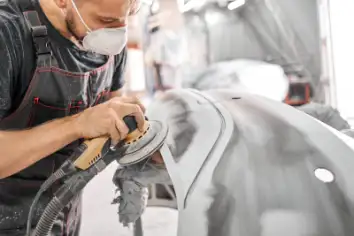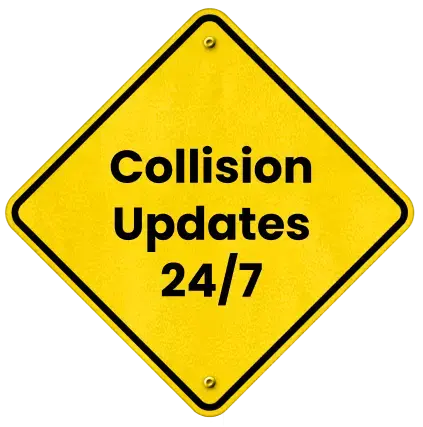
Latest Accidents
More IncidentsWelcome to i17Accidents.com
Your trusted resource for accidents on Interstate 17, from Phoenix to Flagstaff and every mile in between. Whether you’re passing through or commuting daily, our site is here to provide life-saving information, traffic safety guidance, accident assistance, and compassionate referrals.
Traveling along the I‑17 corridor can be scenic, but it also comes with risks. From the desert heat that can leave drivers dehydrated near Snowflake to congested construction zones closer to Phoenix, this busy interstate experiences thousands of accidents every year. Whether you’re commuting, traveling for leisure, or working as a commercial driver, knowing what happens during an I‑17 crash and what to do afterward can make a big difference in your recovery.
At i17Accidents.com, our goal is to offer straightforward, dependable support, from road safety tips to legal guidance, accident checklists, and answers to your most urgent questions after a crash. If you’ve been involved in an accident on I‑17, remember you’re not alone. We’re here to help you get back on track.
Why I‑17 Is So Prone to Crashes
Varied terrain and climate zones create unique hazards
Stretching from the 500-foot elevation of Phoenix to over 7,000 feet in Flagstaff, I‑17 takes you through mountains, steep grades (like the Verde River Gorge), desert plains, and high country. These changes cause:
- Sudden weather shifts from blazing heat to freezing fog on top
- Steep inclines and declines that challenge braking and traction
- Wildlife crossings in rural and forested sections
- Limited visibility around curves and overpasses
High speeds meet heavy traffic
I‑17 serves as a major commuter route for Phoenix and Flagstaff, with daily traffic that includes:
- Passenger vehicles
- RVs and campers headed for the mountains
- Commercial trucks carrying supplies north
- Tourists unfamiliar with the terrain or switchbacks
During holiday weekends or snowbird season, traffic and risks increase dramatically, especially in areas prone to congestion or chain-reaction pileups.
Construction, maintenance, and narrowing lanes
Ongoing safety upgrades, shoulder repairs, and rockfall mitigation projects often result in:
- Reduced lane widths
- Reduced speed zones
- Sudden merges
- Unmarked detours
Construction zones make driver error more consequential and accidents more likely.
Most Common Accident Types on I‑17
- Rear-end collisions and pileups
All it takes is one driver slamming on the brakes, and you have the makings of a multi-car crash. These occur frequently during: - Sudden congestion near Phoenix
- Hilltop slowdowns in colder weather
- When tour buses or RVs brake unexpectedly
- Run‑off-road crashes
Due to steep shoulders and curves, vehicles can drift off the roadway. Factors include driver fatigue, long-haul driving, distraction, or hills that they couldn’t navigate in time. - Head-on and opposing-lane collisions
Passing on two-lane roads, especially in hilly or foggy conditions, can be deadly. The Green Valley to Flagstaff corridor experiences some of the highest rates of U-turns and head-on collisions in the area. - Chain-reaction pileups
One crash starts a domino effect, especially in low-visibility situations (fog, snow). These often involve multiple vehicles and severe injuries. - Wildlife collisions
Deer, elk, javelinas, and coyotes frequently cross rural sections, leading to dangerous swerves or direct impact. - Commercial vehicle accidents
Semi-trucks and RVs lose control due to factors such as heavier weight, steep gradients, mechanical issues, driver fatigue, or trailer sway.
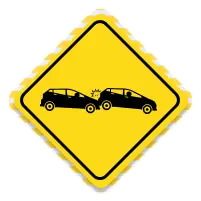
Rear-end
Collisions:
This type of accident occurs when a vehicle hits the vehicle in front of it on the roadway. There are many reasons why this type of accident takes place, often due to driver error while on the interstate..
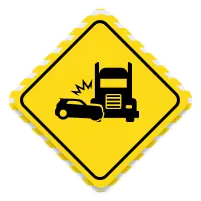
Truck
Accidents:
Roughly 50% of truck accidents on the interstate take over four hours to clean up. Extensive delays along these narrow roadways make traveling on the interstate even more hazardous.
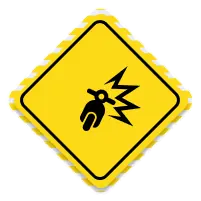
Motorcycle
Accidents:
When a motorcycle accident occurs the results can be severe for a rider. That's because motorcycles & their riders have little protection when involved in an accident with a larger car or truck.
Steps to Take: What You Should Do If You’re in an I‑17 Crash
After an I‑17 accident, your decisions matter. Here’s a guide to help:
1. Prioritize safety
- If possible, move your vehicle to the shoulder or exit.
- Turn on hazard lights.
- Check on everyone involved, especially vulnerable passengers.
2. Call 911 immediately
- Report injuries, fire, or traffic obstruction.
- Inform dispatch of your approximate location; mile markers help.
3. Document the scene
- Take clear photos/videos from multiple angles, including nearby traffic conditions, plates, and signage.
- Note the weather, visibility, and nearby warning signs.
- Record skid marks, debris, and vehicle damage.
4. Exchange information
- Swap names, contact info, license plates, insurance, and license numbers with other drivers.
- If there are witnesses, get their contact details and gather their statements.
5. Cooperate (but don’t admit fault)
- Give factual descriptions to police or troopers.
- Avoid speculating or apologizing; you’re not saying sorry, you’re speaking factually.
6. Get medical attention
- Even if you feel fine, have someone evaluate you for injuries like whiplash or concussion.
- It may not show immediately, but doctors can spot delayed onset injuries.
7. Obtain the official crash report
- Arizona Department of Transportation (ADOT) or local law enforcement will file a report.
- You’ll need the number to obtain the full document later.
8. Get legal help: Contact an experienced car accident lawyer
- Serious injuries, commercial vehicles involved, or multiple parties, an attorney can help advocate on your behalf.
How Police Reports Work on I‑17
Who responds and why it matters
FHP troopers oversee most I‑17 sections. When accidents involve injury, death, roadway blockage, or impaired drivers, they respond and investigate.
What information is included
- Crash location and date/time
- Vehicles, drivers, passengers, and witness info
- Weather, road, and lighting conditions
- Citations or contributing factors
- Diagrams showing how the accident occurred
Why it’s critical
- Insurance and legal professionals depend on it for fault and crash context.
- You’ll need a certified copy to support claims or proceedings.
Timing and access
Claims usually have tight deadlines. You typically receive the report within 10–14 days. If no report is prepared, review agency policy or request a case closure letter.
What if there’s an error?
Cross-check the report with your evidence. Mistakes can be fixed, work with authorities, or ask an attorney to submit corrections.
Insurance, Liability & Compensation on I‑17
Arizona is an at-fault state
Liability is based on who legally caused the accident, not just who was less cautious. Arizona law allows you to recover full damages, even if partially at fault.
Types of compensation available
- Medical expenses, both past and future
- Lost income
- Vehicle or property damage
- Pain and suffering
- Permanent disability or emotional trauma
What insurers review
- Crash report accuracy
- Medical records detailing injuries and diagnoses
- Repair estimates
- Loss of income documentation
- Photographic and physical evidence
- Statements from you, other drivers, and witnesses
Common adjuster tactics
- Quick lowball offers before medical conditions manifest
- Blame-shifting, emphasizing preexisting injuries
- Delaying or requesting repeated statements
How attorneys add value
- Valuing unrecognized damages, chronic pain, reduced earning ability, and the psychological toll
- Gathering and presenting evidence; hiring medical and reconstruction experts.
- Negotiating, pushing insurers to respect the full case value
- Litigating when necessary
- Guiding you through paperwork, timelines, deadlines, and court processes
How Wildlife and Weather Can Affect Your Crash Risk on I‑17
Wildlife crossings
In rural areas like Sycamore Canyon and Mormon Lake, animals roam freely. Deer, elk, and javelina can suddenly appear, causing you to swerve or risk impact. Use high beams during rural nighttime drives and stay alert.
Weather extremes
- Summer: extreme heat can affect tire pressure or engine performance and may cause heat-related vehicle problems.
- Winter: freezing fog and ice, especially above 5,000 ft near Flagstaff, can create slick conditions.
- Monsoon: heavy afternoon rainstorms can lead to flash floods, reduced visibility, and flood-prone washes.
Staying weather-smart
- Monitor ADOT and weather alerts
- Drive slower on inclines and when conditions change
- Use headlights in low visibility
- Pull over if disoriented or unsafe, don’t push through blinding fog or flooding
Long-Term Effects: Physical, Emotional, and Financial
Physical trauma
Injury types include whiplash, head trauma, fractures, soft-tissue damage, and internal injuries from impact or ejection.
Mental health impact
Post-accident anxiety, fear of highways, insomnia, or PTSD are not uncommon, especially after serious crashes or for first responders.
Financial fallout
Because expenses often continue long after the accident, full financial recovery may require expert advice and legal support.
Safety Tips to Minimize Your Risk on I‑17
- Maintain your vehicle
Check brakes, tires, and fluids, especially before mountain drives. - Drive defensively
Stay aware of surroundings, anticipate braking needs, don’t tailgate, and avoid distractions. - Respect elevation changes
Use lower gears on declines, avoid overheating brakes, and give trucks plenty of space. - Be wildlife-aware
Slow down at dusk/dawn, scan unlit shoulders, and use high beams wisely. - Adjust for weather
Fog: reduce speed, low beams; Flooding: avoid flooded areas; Heat: watch tires. - Use technology
Navigation apps (e.g., Google Maps, Waze) can alert users to accidents, slowdowns, or road closures on the I‑17 corridor.
Why i17Accidents.com Exists and How We Can Help
Our mission
To be your clear, caring guide after an accident on I‑17. We explain steps when you don’t know what to do next and connect you with help.
We provide
- Up-to-date crash response checklists and recovery steps
- Clear explanations of Arizona’s crash reporting system
- Safety tips for challenging driving conditions
- Insights into insurance rights and legal options
- Contacts for legal and medical professionals familiar with I‑17 incidents
- Real stories, data insights, and valuable community resources
Next Steps if You’ve Been in a Crash
- Seek medical care even for minor injuries
- Obtain your crash report via ADOT or local law enforcement
- Document everything: photos, records, repair estimates
- Notify your insurance, but avoid early statements without counsel
- Meet with a qualified accident attorney, especially if injuries are severe, fault is disputed, or a commercial vehicle was involved
- Follow through on medical care: pain relief, physical therapy, and mental health support
- Stay safe when you plan for your next trip. Use this site’s guides for future reference
Navigating Emergency Response Along I‑17: What to Expect and How to Prepare
The moments after a crash on Interstate 17 are critical. Emergency response along this highway is managed by a mix of local agencies, state troopers, and, in more remote areas, forest or tribal responders. The mountainous and rural terrain between Phoenix and Flagstaff often results in longer response times in specific locations, especially during bad weather or when multiple accidents happen at once.
Suppose you’re ever involved in a crash on I‑17. In that case, it’s helpful to know that Arizona’s Department of Public Safety (DPS) handles statewide law enforcement duties, including accident investigation, impaired driving arrests, and traffic management. According to the Arizona DPS Incident Response procedures, their officers are trained to focus on injuries and clear roads quickly to avoid secondary accidents, which are common on high-speed highways.
Keep a first aid kit, emergency triangle, and water in your vehicle, especially when driving between Camp Verde and Flagstaff. In a medical emergency, responders may need to work with the Arizona Department of Health Services air evac teams or send you to trauma centers in Flagstaff or Phoenix, based on how close they are and how severe your injuries are. Being prepared means carrying your ID, insurance card, and emergency contacts somewhere easy to access. These small steps can speed up your care and response communication.
Understanding Crash Trends and Traffic Safety Data for I‑17 Travelers
Accident patterns along I‑17 reveal much about the types of collisions and where they’re most likely to occur. Whether you’re driving for leisure or commuting, staying informed about the data can help you make safer travel decisions.
According to the National Highway Traffic Safety Administration (NHTSA), Arizona consistently ranks among the top states for rural highway fatalities, mainly due to the combination of high-speed travel and rugged terrain. Sections of I‑17 with steep grades, such as the Black Canyon area and stretches near Sunset Point, are among the most dangerous for rollovers and single-vehicle accidents.
Rollover accidents on I‑17 account for a disproportionate number of fatalities compared to other crash types. Many are attributed to speeding, overcorrection, or drowsy driving, particularly on long, open stretches. The Federal Motor Carrier Safety Administration (FMCSA) also reports an increase in commercial truck crashes along I‑17, often tied to steep descents and poor cargo balance.
Travelers can reduce risk by checking real-time road conditions and traffic incidents before heading out. The Arizona Traveler Information System (AZ511) offers maps, camera feeds, and alerts that reflect up-to-the-minute conditions, including closures and construction delays that could heighten accident risk.
Commercial Vehicle and Freight Traffic: A Hidden Risk on the I‑17 Corridor
Many travelers underestimate the sheer volume of commercial freight using Interstate 17. This route plays a critical role in Arizona’s economy, connecting Phoenix-based distribution centers with Flagstaff, the Navajo Nation, and roads leading to Utah and Colorado. With limited passing zones and sharp inclines, collisions involving 18-wheelers, box trucks, and construction vehicles present a unique hazard.
According to the Arizona Department of Transportation (ADOT), there has been a steady increase in truck traffic on I‑17, especially as Flagstaff’s logistics industry expands. ADOT enforces strict weight limits, braking standards, and safety inspections at various points, but even with those measures, improperly loaded trucks or fatigued drivers can cause devastating crashes.
Truck accidents are not only more likely to result in severe injuries, but they are also more challenging to investigate. Multiple parties, including the driver, freight company, and equipment manufacturers, may be held liable. Besides physical damage, these crashes often lead to extended highway closures, creating dangerous detours or secondary accidents in congested areas.
If you’re near large trucks, exercise extra caution, give them plenty of space, avoid lingering in blind spots, and never cut off a vehicle that needs additional time to brake. If you’re involved in a crash with a commercial vehicle, report it immediately to the FMCSA and consider consulting a legal expert familiar with the commercial transport regulations in Arizona.
How I‑17 Accidents Impact More Than Just the Roadway
Crashes along I-17 often do more than just damage vehicles; they can impact every aspect of a person’s life. From families relying on a single car for transportation to business owners delayed by freight disruptions, the effects of a serious accident extend far beyond the crash site.
For individuals, consequences may include missed workdays, lingering pain from injuries, and emotional distress that persists long after the wreckage is cleared. In more tragic cases, families may be left dealing with the death or severe disability of a loved one, compounded by the stress of managing medical bills, insurance negotiations, or even legal disputes.
On a larger scale, I-17 accidents can shut down major stretches of roadway for hours or more, affecting everything from emergency services to local tourism. Flagstaff businesses might lose weekend customers. Phoenix residents could face increased traffic from detours and delays. Rural communities along the route, such as Camp Verde and Black Canyon City, may encounter detours that strain local roads unprepared for heavy traffic.
These ripple effects highlight why staying safe, informed, and prepared is so important—not just for yourself, but for everyone who depends on I-17 as a critical route link.
The Importance of Acting Quickly After an Accident
Following an I-17 crash, the aftermath can be incredibly overwhelming. Amidst the adrenaline, confusion, and frustration, it’s all too easy to miss essential steps that safeguard your health, rights, and financial recovery. However, timely action is crucial.
Delaying medical attention, failing to report the accident promptly, or neglecting to inform your insurance company can significantly impact your ability to secure damages later. Even if you feel fine initially, some injuries, such as internal trauma or soft-tissue damage, might not present symptoms right away. Seeking a medical evaluation as soon as possible helps establish a connection between your condition and the accident, creating an official record that could be vital for any future claims.
Additionally, accident scenes can change rapidly. Tire marks may fade, debris can be cleared away, and witnesses may leave. The quicker you document the incident, through photographs, notes, and gathering contact information, the stronger your case will be when dealing with insurers or legal representatives.
It’s also important to be aware of deadlines. Whether you’re filing an insurance claim or considering legal action, Arizona has strict statutes of limitations. Waiting too long could forfeit your right to seek compensation entirely.
Being proactive in the days following an accident doesn’t require you to handle everything at once. However, having a strategic plan and knowing where to seek assistance can significantly influence the outcome of your situation..
How to Prepare Before Driving the I‑17 Corridor
Preventing accidents often begins before you even get behind the wheel. Whether you’re a commuter heading into Phoenix, a traveler on your way to the Grand Canyon, or a truck driver hauling goods north, being prepared for the unique challenges of I‑17 can reduce your risk of a crash.
- Vehicle readiness: Ensure tires (including the spare) are in good condition.
- Check fluid levels, brakes, and lights.
- Maintain the cooling system, especially in summer, to prevent overheating.
- Weather considerations: Be aware of winter conditions near Flagstaff and northern elevations (snow, ice, black ice).
- Carry chains if necessary and stay updated on weather changes.
- Emergency supplies: Bring water, snacks, a flashlight, and an emergency kit.
- Keep a physical map or printed directions for areas with spotty cell service.
- Driving safety: Be mindful of speed changes, especially on steep descents.
- Use lower gears when driving downhill.
- Give commercial vehicles extra space on the road.
- Fatigue management: Take regular breaks and rotate drivers if possible. – Avoid driving when drowsy.
Driving I‑17 safely means staying alert, informed, and respectful of the road’s many moods and conditions. Preparation is your best defense against the unexpected.
Life After an I‑17 Crash: Recovery and Moving Forward
Being in an accident on I‑17 doesn’t just affect your car; it can impact your entire life. Whether the crash was a minor fender bender or a serious collision, the aftermath often brings physical pain, emotional stress, and unexpected financial strain.
Healing Takes Time
Many injuries, like whiplash or soft-tissue damage, don’t show symptoms right away. It’s essential to get checked out, follow through with treatment, and listen to your body. Mental recovery matters too. Anxiety behind the wheel, trouble sleeping, or flashbacks are common and nothing to be ashamed of. Support from professionals or even friends and family can make a real difference.
Managing Costs and Paperwork
Accidents can be expensive, even with insurance. Between doctor visits, repairs, lost workdays, and follow-up appointments, the bills add up fast. Keeping records and staying organized can help you manage the process more easily. And if things get complicated, legal guidance might help protect your rights.
Taking Back Control
Returning to normal after a crash can feel slow, but it’s possible. Whether you’re ready to drive again or still working through it, every step forward matters. Some drivers benefit from defensive driving courses or therapy for road anxiety. Others take smaller steps, changing routes, avoiding high speeds, or driving with a friend.
However you move forward, remember: you’re not alone. Many people have been in your position, and with the right support, you’ll find your way back to confidence and control.
Safety, Justice, Recovery: Drive with Peace of Mind
Accidents on I‑17 can happen suddenly and impact your life profoundly. Knowing your rights, understanding the reporting and insurance process, and learning how to protect yourself helps you face what comes next with confidence.
Whether you’re seeking compensation, legal advice, or understanding recovery steps, i17Accidents.com is here to support and guide you. Bookmark our site as your “roadside co-pilot” because safety doesn’t end when the accident does.
Frequently Asked Questions
What should I do immediately after an I‑17 accident?
- Safety first: Move off the roadway if it’s safe, onto the shoulder or beyond the guardrail. Set up hazard lights or triangles.
- Call 911: Report injuries, significant damage, or blocked lanes. Provide mile marker or exit information.
- Document the scene: Take clear photos/videos of vehicle damage, skid marks, debris, environmental conditions, and signage.
- Exchange information: Get driver names, insurance, license numbers, vehicle plates, and witness contacts.
- Avoid admissions: Don’t admit fault or apologize, just stick to what happened.
- Seek medical attention: Even if you feel fine, delayed symptoms like whiplash or concussion can emerge.
- Request the crash report number: Ask the trooper or officer for their report number for future reference.
- Notify your insurer: Promptly report the crash without giving recorded statements until you fully understand your situation.
When must I report the accident to the police?
Arizona law mandates crash reporting if:
- Anyone is injured or killed
- Property damage that appears to exceed $1,000
- A vehicle is disabled and blocking traffic
- DUI, reckless driving, or other violations are suspected
Many I‑17 crashes meet these criteria. If you’re unsure, it’s safer to report the collision to DPS or local law enforcement.
Who responds on I‑17, and what do they do?
Interstate 17 is patrolled by the Arizona Department of Public Safety (DPS). Troopers will:
- Secure the scene and protect drivers
- Coordinate with medical or fire crews
- Interview all parties and witnesses
- Measure skid marks and document the scene
- Write an official crash report
- Issue citations for violations like DUI, speeding, or wrong-way driving
Their investigation and report form the basis for insurance and legal work.
How do I get a copy of the DPS crash report?
Crash reports (Form 301) are typically available within 7–14 days. You can:
- Visit the DPS Crash Report Portal online
- Order it by mail or in person from DPS headquarters
- Provide crash info (date, location, driver names, report number)
- Pay the fee (usually under $10)
If the crash happened in a city like Phoenix, your report may be available through the city police department.

Be extra alert:
This seems obvious, but try to be extra alert when driving on dangerous highways. Act as if you’re driving in poor road conditions (heavy rain or snow or poor visibility).

Plan ahead:
If you’re traveling long distances on a road trip or for work or pleasure, plan ahead. Consider when you’ll hit heavy-traffic areas and the weather conditions throughout your trip.

Rest:
If you feel drowsy, take a break and let someone else drive or pull off in a safe place for a quick nap. Here are some keen warning signs of drowsy driving: yawning or blinking frequently, watering eyes, difficulty recalling the past few miles that you’ve driven, missing exits, or drifting from your lane.

Obey traffic laws:
Always obey traffic laws. Not only will this prevent you from receiving a ticket, but you’re less likely to get into a fatal car accident if you obey the speed limit and other traffic regulations.








